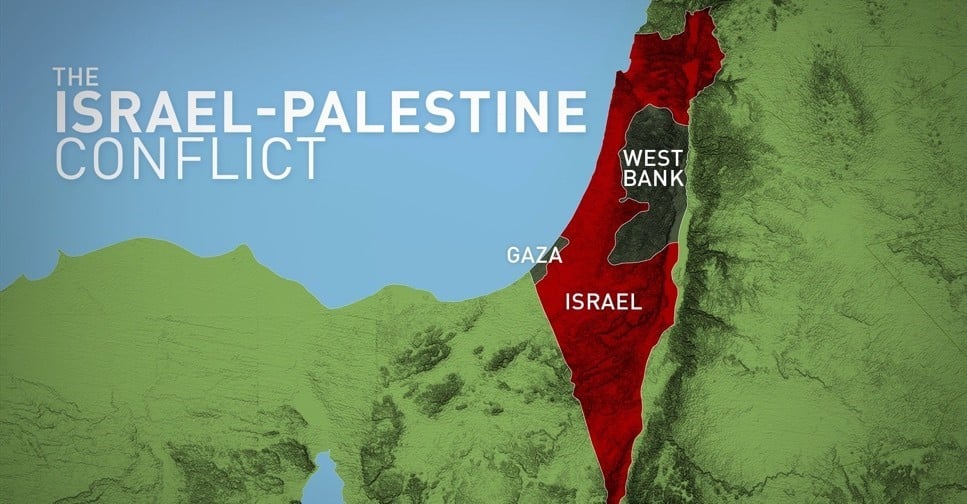
Do I need to be Jewish to understand the pain and suffering the minority group endured throughout history, including the holocaust and non-stop aggression against them? Or, do I need to be Palestinian to learn the pain, suffering, and aggression that Israeli Jews inflicted on Palestinians? How about being an Iranian and trying to explain the pain that Israeli Jews and Palestinian Muslims suffer? Can I even fathom to explain deep, painful emotions here? Or, can I at least try?
The last time I entertained the idea of defending Palestinians without infuriating my Jewish friends, I ended up apologizing for a good four hours, replying to emails and phone calls. The whole turmoil cost me an expensive lunch with a rabbi. But, does this mean that I should never try again? Well, if you don’t know me, here’s your chance.
War is the most profitable business for us. We sell weapons and military intelligence by the billions to get our economy going.
I am not sure how many Palestinians are going to get killed by Israel’s airstrike, and how many Israelis are going to die by Hamas’ Iran-supported war. The casualties are already “too high.” Since October 6, only a few short days ago, more than 500 airstrikes targeted the 146 square miles of Gaza strip, an area the same size as Philadelphia.
 The green bulb to the east of Israel contains 1.6 million civilians. There are a lot of people in a very small territory. We also have a high number of casualties on the Israeli sides. The recent attacks led to “the most civilian deaths on a single day in the country’s entire history,” a senior Knesset official said.
The green bulb to the east of Israel contains 1.6 million civilians. There are a lot of people in a very small territory. We also have a high number of casualties on the Israeli sides. The recent attacks led to “the most civilian deaths on a single day in the country’s entire history,” a senior Knesset official said.
The purpose of this op-ed is not to justify either side. I’m writing to see if I can re-live, and self-practice the lectures I gave about nonviolent communication to my Iranian-American community a couple of months ago.
However, right off the bat, I need to contradict myself about the term “communication” and explain something important here. “There is substantial indirect evidence that [Western news coverage] generates aversion, skepticism, and hostility to Muslims” within the United States news cycle, according to Erik Bleich and Maurts van der Veen, researchers and authors of Covering Muslims: American Newspapers in Comparative Perspective.
In their book, they argue that “Muslims are disfavored categorically compared to White individuals, as well as Christians, Jews, Buddhists, and Hindus.”
Given the imbalanced attitude toward covering news related to Muslims, I would like to explain how to communicate nonviolently.
“The Israelis attacked so suddenly and abruptly that my grandma didn’t have time to turn off the gas stove. She hurried to collect my mom and uncle and fled.”
The first principle of nonviolent communication is to consciously listen, and really hear what the opponent says. Here, can we honestly ask ourselves if we are capable of listening to the stories of Palestinians, and the pain they have suffered? And perhaps vice versa. Can we bring ourselves to hear the story of a Jewish mom and her life during the holocaust?
I met Mariam at the University of Chicago‘s main cafeteria. We became friends shortly afterward and told each other life stories. At some point, when we were chatting, she told me the story of her grandma. “During the first Nakba, the Israelis attacked my grandma’s village so suddenly and abruptly that she didn’t have time to turn off the gas stove. She hurried to collect my mom and uncle and fled. She was never able to claim her house in the West Bank. Many houses, like hers, were left unoccupied for the Israeli families to take over. Some of the Jews really didn’t quite understand, or didn’t bother to question, the well-furnished houses in the West Bank. They just took them.”
 For those readers who don’t know Nakba, also known as the Palestinian Catastrophe, Nakba refers to the destruction of Palestinian society in 1948. During Nakba, or “the disaster” in Arabic, the majority of the Palestinian Arabs were permanently displaced and never received the right to get back to their homes or homeland.
For those readers who don’t know Nakba, also known as the Palestinian Catastrophe, Nakba refers to the destruction of Palestinian society in 1948. During Nakba, or “the disaster” in Arabic, the majority of the Palestinian Arabs were permanently displaced and never received the right to get back to their homes or homeland.
As for the Jewish personal stories, one of my Jewish friends once wrote to me, “The Nazis used our skin to make lampshades. Our fat to make soap. They used our Torah scrolls to line shoeboxes. The gold from our teeth was pulled. People were pushed into gas chambers by the thousands.”
The challenge here is to be able to listen to the stories of the other side with sympathy and compassion. I know we cannot do it in our news stories. But, we can do it in small groups of Israelis and Palestinians.
The second principle of nonviolent communication is to use language to connect. Words have power. In nonviolent communication, we learn to use the power of words to reconnect and understand. This is very hard since in particularly charged moments, we usually deal with lots and lots of emotions. It is important to be able to distinguish between thoughts and feelings, and to be able to communicate thoughts effectively.
I think, at the end of the day, it is up to us to unlearn violence and learn to Communicate nonviolently.
That brings us to the third principle of nonviolent communication, which is to communicate for what we want to see. And at the end, we “share the power with others,” rather than using the “power over others,” as the means of influence.
 In my previous attempt to communicate with my Israeli and Palestinian friends during the Israel-influenced war in May 2021, I failed to walk through any of those steps. When Israel attacked Palestine and called the war “Gaza Operation,” I didn’t practice any of those principles. The result was pretty predictable. I created a backlash among my Jewish friends. And my Muslim friends were angry and disheartened.
In my previous attempt to communicate with my Israeli and Palestinian friends during the Israel-influenced war in May 2021, I failed to walk through any of those steps. When Israel attacked Palestine and called the war “Gaza Operation,” I didn’t practice any of those principles. The result was pretty predictable. I created a backlash among my Jewish friends. And my Muslim friends were angry and disheartened.
No Western media, politicians, AIPAC (or American Israel Public Affairs Committee), or any interest group will help us to communicate nonviolently. War and violence is the biggest market with the most profitable outcome. We sell weapons and military intelligence to Israel, Ukraine, Saudi Arabia, Afghanistan, and other countries by the billions. In return, we get our economy going.
I think, at the end of the day, it is up to us Palestinians, Jews, Iranians, and those who love their homelands in the Middle East, or in any war-inflicted region, to unlearn violence and learn to Communicate nonviolently.
As Marshall Rosenburg, author of Nonviolent Communication and a Jewish clinical psychologist himself, explains in the book, Nonviolent Communication is not an attempt to end disagreements, but rather a method to increase empathy and improve the quality of life for those who utilize the nonviolent method for themselves and people around them.
Insha’Allah!
Please Pledge to Our Peace Journalism.
Goltune is editorially independent. We set our agenda. No one edits our editors. No one steers our opinion. This is important as it enables us to stay true to our values.
Every contribution we receive from readers like you, big or small, goes directly into funding our journalism. Please support Goltune, large or small.
Send your contributions to our PayPal account: [email protected]
Or, Click the link to pledge your support.
Thank you,
Goltune Editorial Team






